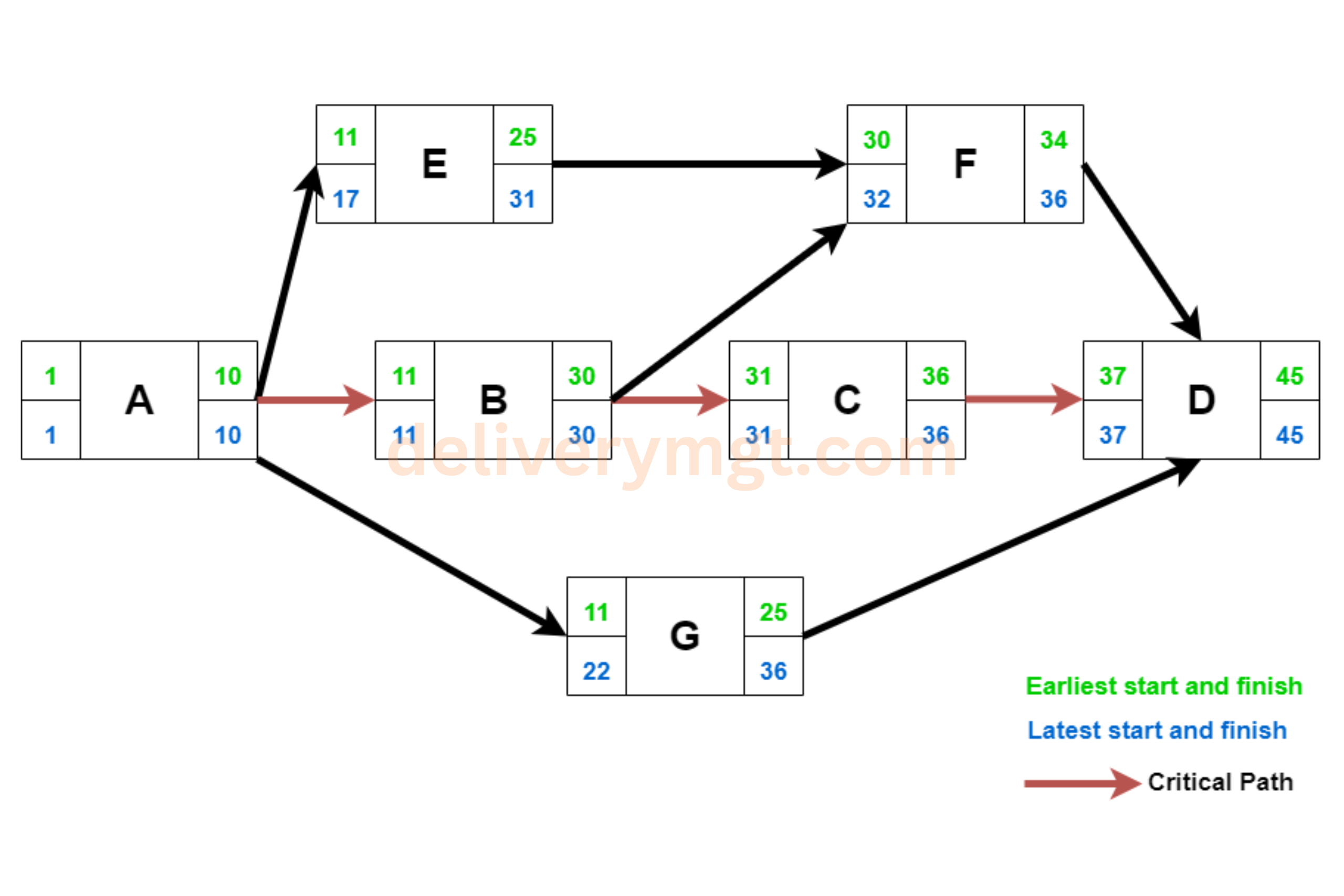
Everything about the Critical Path Method (CPM)
In this article, we will delve deep into the Critical Path Method (CPM) – a widely used project management model known for its effectiveness in both project planning and progress monitoring. We will explore its benefits, acknowledge its limitations, identify the ideal scenarios for its application, and compare it with other popular models like PERT, Gantt, and WBS.
What is the Critical Path Method (CPM)?
The critical path method (CPM), also known as Critical Path Analysis (CPA), is a project management model that helps you plan, track, and manage the schedule of a project.
Like many fundamental project modeling methodologies, the Critical Path Method (CPM) was formulated in the 1950s; however, its principles, though not referred to as CPM, were already partially adopted by the US Navy in the 1940s – does it remember anything?
CPM helps manage projects by:
- Identifying the sequence of tasks that must be completed in order to finish the project
- Identifying which tasks are the most critical
- Identifying the dependencies between tasks
- Calculating the amount of time it will take to complete each task
- Determining the possible project duration
The critical path is determined by the sequence of activities required to complete the project, meaning that if any delay would affect tasks on the critical path, this would result in a delay of the entire project.
To better understand this we need to introduce a concept often associated with the CPM: float, also known as slack. It represents the amount of time an activity can be delayed without delaying the entire project. Non-critical tasks have float, while tasks on the critical path have zero float.
CPM is a powerful tool that can help you manage your projects effectively. However, it is important to remember that it is just a model. It cannot guarantee that your project will be completed on time or within budget. However, it can help you identify potential risks and make informed decisions about how to mitigate those risks.
When Is It Ideal to Use CPM?
Complex project with a large number of tasks
While CPM can be an overkill for small and simple projects, it becomes the perfect approach for projects involving a significant number of tasks, enabling effective resource allocation towards critical activities.
Inflexible deadline
By identifying the critical path, you can make sure that you are allocating your resources appropriately and reduce the risk of not meeting the deadline.
Work is well-defined
CPM is not very helpful for projects where work is undefined, not easy to predict or where it might change as the project progress. In all these cases, it may be difficult to identify the critical path, so you want to make sure to use this model only if work is well-defined.
High risk of delays
By identifying the critical path, you can identify the tasks that are most likely to cause delays and take steps to mitigate those risks.
Contractual obligations
Certain contracts may incorporate penalty clauses that require the presence of CPM documentation. The purpose behind this inclusion is to streamline the process of settling legal conflicts arising from project delays and disputes regarding accountability. If such an obligation is outlined in the contract, it is highly advisable to embrace the utilization of CPM.
If you are not sure whether or not CPM is the right tool for your project, it is best to consult with a project management expert.
How to Find the Critical Path
To find the critical path, you will need to follow these steps:
- Identify the tasks that need to be completed. This may seem like a simple step, but it is important to make sure that you have identified all of the tasks that need to be completed in order to finish the project.
- Determine the dependencies between tasks. Not all tasks can be completed independently of each other. Some tasks have dependencies, which means that they cannot be started until other tasks have been completed.
- Estimate the duration of each task. This is where you will need to make some educated guesses about how long each task will take to complete. You can use your experience, historical data, or the estimates of experts.
- Create a network diagram. A network diagram is a visual representation of the tasks in your project and their dependencies. This will help you to visualize the critical path and to identify any potential risks.
- Calculate the critical path. Once you have created a network diagram and identified the tasks on the critical path, you can calculate it.
You can use a project management tool to help you track the progress of your project and focus your resources on the tasks that are on the critical path. This will help you to ensure that the project is completed on time.
Differences with Other Models
Differences Between CPM and PERT
The critical path method (CPM) and the program evaluation and review technique (PERT) are two project management models that have been developed around the same time to plan, track, and manage the schedule of a project. Because of this, there are a number of similarities between the two models.
On the other hand there are also significant differences. CPM is a deterministic method: it considers only a single time estimate and assumes that a task will take the amount of time that you have estimated. PERT, on the other hand, is probabilistic and uses three point estimates for each task: Optimistic (O), Most Likely (M), and Pessimistic (P).
As a result, CPM is generally easier to use than PERT. However, PERT is more accurate than CPM.
Differences Between CPM and Gantt Charts
There are also key differences between the Critical Path Method (CPM) and Gantt charts.
To begin, these models have different visual representations. While CPM uses a network diagram to display the sequence of tasks and their dependencies within a project, Gantt charts are bar charts that showcase the start and end dates of individual tasks.
Also, Gantt charts do not calculate the critical path and CPM is more accurate anyway as it takes into account the dependencies between tasks. As a result, Gantt charts may underestimate the amount of time it will take to complete a project.
On the other hand, as previously mentioned, CPM is not ideal for simple projects, where Gantt charts might be more appropriate. If you are working on a complex project with a lot of dependencies, then CPM may be the best option. However, if you are working on a simple project, then Gantt charts may be the better option.
Alternatively, CPM and Gantt charts can be used together, as they complement each other and offer a comprehensive view of the project. Most project management tools nowadays support this possibility.
Differences between CPM and WBS
As we have highlighted in a previous article, the Work Breakdown Structure (WBS) is used to create a hierarchical structure of the project, with each level of the hierarchy representing a more detailed breakdown of the project.
Both the CPM and WBS are task-oriented and offer an overview of the dependencies.
On the other hand, the WBS is not used to identify the critical path and can also be more detailed of the CPM in breaking down the tasks needed to complete a project.
The visual representations of the two models is also quite different, as in the WBS the activities are listed following a hierarchical structure while the CPM uses a network diagram.
Conclusion
In conclusion, the Critical Path Method (CPM) proves to be an useful model for managing complex projects efficiently. By identifying the critical path and analyzing task dependencies, CPM empowers project managers to allocate resources effectively and make informed decisions to mitigate potential risks and delays.
It stands apart from other models like PERT, Gantt, and WBS due to its deterministic nature and accuracy, making it the preferred choice for complex projects. Ultimately, combining CPM and Gantt charts in project management tools can provide a comprehensive view, ensuring successful project outcomes.
Share this article with your peers to unlock the power of CPM in your next projects!
Italian cloud computing professional with a strong background in project management & several years of international experience in business consulting. His expertise lies in bridging the gap between business stakeholders & developers, ensuring seamless project delivery. During his free time, he enjoys fatherhood and immersing himself in nature.



